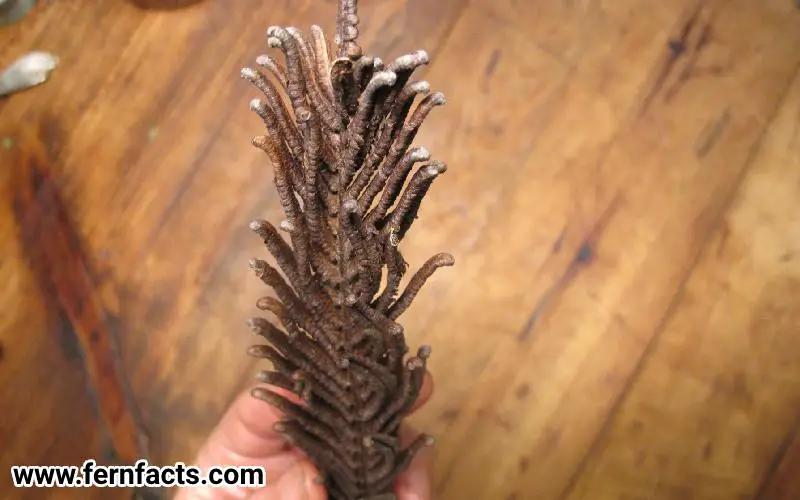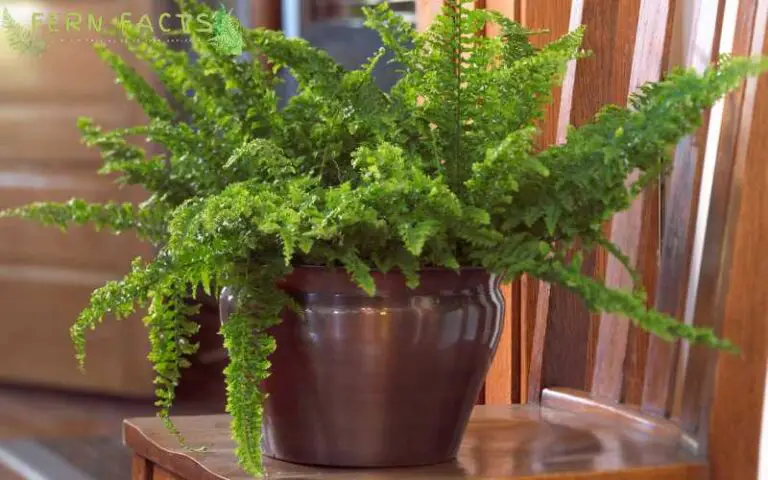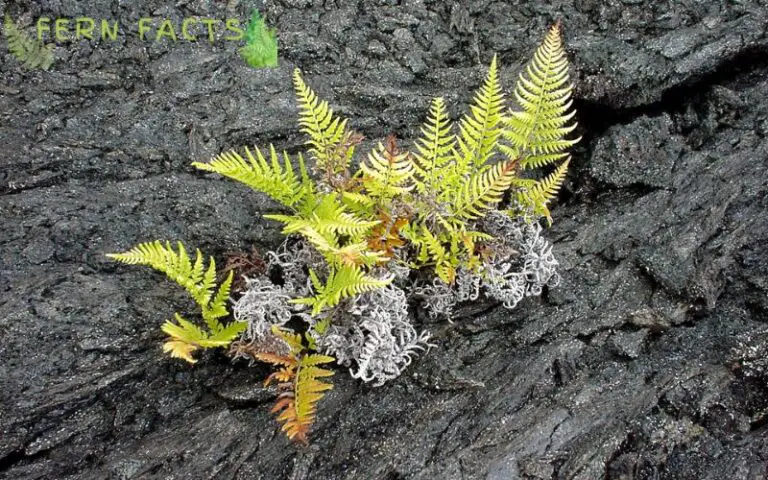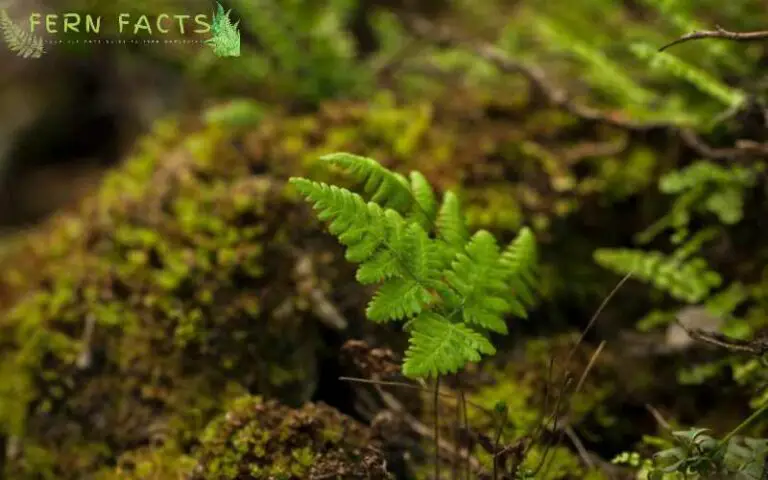How to Grow Ostrich Ferns From Spore
Do you have ostrich ferns at home? Ostrich ferns are very frequent growing ferns in many places because of their adaptability.
As they are low-maintenance and drought-tolerant, they are very likely to be planted by many cultivators. If you have ostrich ferns at home, you can also grow multiple ostrich ferns from that one fern.
If you want to know how then follow the article attentively. I will guide you on how you can grow multiple ostrich ferns from one by collecting only spores. So let’s start with the basic characteristics of ostrich ferns.
Overview of Ostrich Fern
- Botanical name: Matteuccia struthiopteris
- Common name: Ostrich fern
- Plants: Deciduous
- Native range: Europe, Northern Asia, North America
- Native habitats: rich woodlands, swamps, and low places
- Shade: partial or full
- Height: around 3 to 8 ft
- Width: up to 3-5 ft
- Hardyzone: 3, 4, 5, 6, 7
- Soil pH: acidic soil (5- 6 pH)
- Tolerance: Wet soil
Ostrich ferns are the most renowned deciduous plants that have crown shape formation while growing. They mostly grow in a vertical crown shape in the gardens.
In many local regions, they are also known as fiddlehead ferns or shuttlecock ferns by the locals. However, the most common is an ostrich that comes from ancient Greek.
These ostrich ferns got awards from the Royal Horticultural Society’s Award of Garden Merit because of their unique vertical crown shape characteristics.
In the marketplace, they are quite expensive ferns to buy. So if you are planning to buy this fern, you need to raise a decent round of money for this fern.
Further, they lose their beauty during the summer times as they start to lose their fronds. Also, they need protection for winter seasons otherwise these ferns will get vulnerable.
When to Collect Spores From Ostrich Ferns
For collecting spores, the best time would be early springtime as it’s ostrich fern growing season. In this season, their spores start to get ripe.
If you observe the spores are still green then they are not ready for planting yet. But if you notice that your ostrich fern’s spores become brown then it’s ready to use for propagation.
Step 1: Choose Your Ostrich Ferns
First, choose your mature ostrich ferns for collecting the spores. In general, ostrich ferns become mature around 2 to 3 years after being first established.
So if your ostrich ferns are that old, they have already become mature by that time.
Step 2: Collect Spores
After selecting your mature ostrich fern plant, you have to check whether they have ripe spores or not. At the initial stage, spores look like white and green colored small dots.
By the time they ripen, they become brown and black. So, check if your ostrich ferns have brown ripe spores or not.
If the spores are still green or white, then they are still not ready; give your plants some time to mature.
Now that you have ensured that they have ripe spores underneath the fronds, collect the spores in white paper or in a white cloth.
Just gently flick or shake the fronds so that spores gradually fall on the white paper.
Step 4: Make the Potting Soil
Now after collecting the spores from your ostrich ferns, keep that paper aside for a few minutes. In the meantime, prepare the new potting soil for planting those spores.
For mixing the soil, make it a more peat-based soil mixture. Along with peat moss, add perlite vermiculite, leaf mold, sand, etc.
All these substances will give you a rich humus and well-drained Soil mixture for your ostrich fern.
Step 5: Plant in a Pot/ Container
Now buy a Planting box from any nearby market at your convenience. Also, you can use any one-time cup or pot for planting those spores.
Before using those containers or pots gently sterilize them to prevent any further infection.
Now after sterilizing the pots, fill the pot half with your new potting soil and spread the spores on the surface level.
Later on, moderately cover the spores with soil so that they get partially covered not fully though.
Step 6: Keep the Pot Indoors
Now after you have finished those processes, keep your pot indoors with bright indirect sunlight. Don’t let them be under direct sun exposure because it can burn the spores.
Keep them in shady places so that they can bloom in their way. Regularly mist in the soil surface and keep them hydrated as well. But don’t overwater the soil or be too watery.
Step 7: Checking for Fern Shoot (Prothalli)
After a few days or weeks, you will notice ferns shoot or Prothalli coming from the soil surface. It means your propagation process is successfully complete.
Now that your ferns are already growing and established, you can plant them in a new pot.
Step 8: Plant It to a Pot/container
Now you have to finally plant your ostrich ferns into a pot. Take a pot that has a proper drainage hole system for the excessive water.
Now again, mix the pot with the potting soil that you have prepared before and fill the pot half. Later on, plant your ostrich fern shoots into that pot and fill the pot with the existing soil mixture.
You can also plant them in your garden as well by digging into the land and planting the fern shoot there.
Step 9: Follow Normal Routine
And now to get thriving ostrich ferns, you need to follow the normal care routine. Before establishing them, make sure you have provided them with their ideal condition like shaded, humid atmospheres with moist soil.
Now weekly water your ostrich ferns not more than one time. The goal is to keep the soil moist and damp, not overly soaked.
Although they can tolerate wet soil, excessive wet, and water can rot their roots. Yearly fertilize and prune your ostrich ferns to get a bushy and thicker appearance.
Closing Statement
In short, ostrich ferns are one of the famous deciduous ferns that form a shape into a vertical clown form in the garden. They are mostly planted as ground coverers in many gardens, parks, or yards to cover the spaces.
As they are quite expensive plants, it’s not affordable to buy them more frequently. So If you have ostrich ferns at home, you can also make plenty of Ostrich ferns from their spores without buying.
Just collect the spores from the growing seasons and follow the mentioned guidelines I have already told you here. Certainly, you will be able to follow those steps and have plenty of Ostrich ferns for your garden as well.







